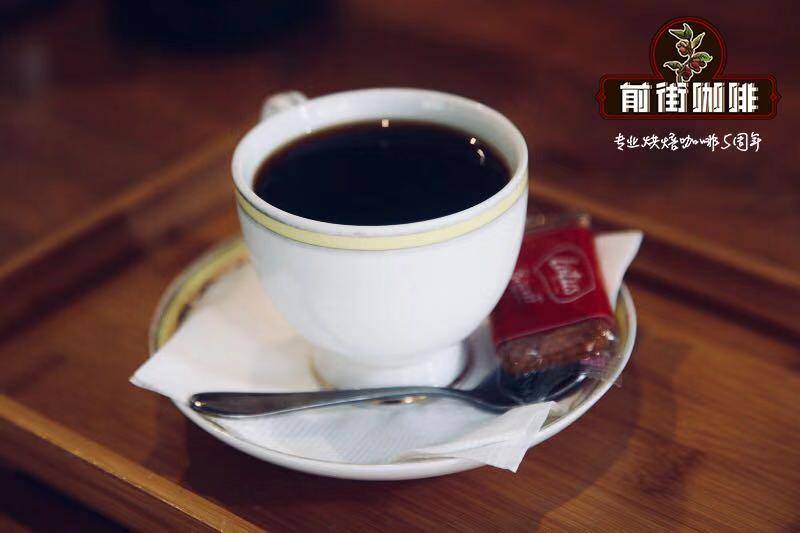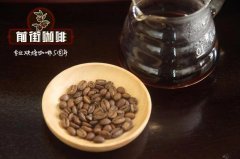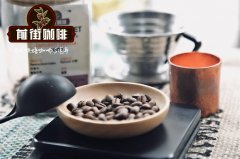Do you know what coffee beans are roasting defects? how to pick roasted coffee beans with defective beans?

Professional coffee knowledge exchange more coffee bean information please follow the coffee workshop (Wechat official account cafe_style)
Roasted coffee defective beans are the defective beans caused by the lack of selection or carelessness in the selection of raw coffee beans and operational problems during baking. Because the machine operates and heats continuously during baking, there will be a lot of variables during this time, so even if the raw beans are not defective, the roasted coffee beans will have defective beans. Knowing how to bake defective beans can help ensure the quality of coffee.
1. Roasted coffee beans Baked Coffee
The long baking time before explosion is the main reason for the production of baked coffee. Unfortunately, this flaw is not visible to the naked eye and can only be identified by taste. Usually, baked coffee is accompanied by a plain flavor and no sweetness, which is described as bread or paper.
2. Incomplete development of Underdevelopment
Underdeveloped beans tend to have a "grassy smell" and lack the aroma of caramel. When the bean baker wants to do shallow baking, sometimes the development is not complete. At this point, the baker needs to adjust the baking curve slightly.
3. Overdeveloped Overdevelopment
This is a flavor that many professional consumers do not like. These coffee beans look black, oily and sometimes even scorched. The cup test will have a charred, bitter taste, with a smoky and peat flavor.
4. Burnt beans Scorching
When the temperature in the furnace of the bean dryer is too high and the rotational speed is too slow, scorching will occur. Burnt beans are very easy to identify. Dark, charred patches appear on the flat part of the surface of the coffee bean-the whole bean is actually scorched. These coffee beans taste noticeably oily, smoky, and even look like burnt meat.
How to identify and prevent defective beans?
Bean bakers can use professional equipment, such as a coffee baking analyzer. These devices do not prevent defects, but they help measure baking consistency.
Roasting coffee beans is not only a science, but also an art. Coffee farmers may nurture and process these beans with great enthusiasm and dedication-but without good roasting, coffee consumers will never be able to taste this well-cared flavor.
Factory workers screen carefully before baking beans to pick out defective beans to ensure baking quality.
Bake the best coffee beans to provide consumers with the taste of the best.
How to select baked defective beans
Coffee beans are selected manually after roasting and need to be selected by an experienced baker to identify defective beans. Manual selection of roasted defective beans can better select a variety of roasted defective beans to ensure the quality of coffee. Roasting defective beans is also a key factor affecting coffee flavor, as well as coffee defective raw beans is a part of coffee quality assurance.
Coffee roasting is an advanced technology, which requires years of baking experience and regular baking time to find the right curve of a bean, to bake a good coffee bean, and finally to present a cup of coffee with good flavor. Defective beans are an important factor affecting the quality of coffee, so they must be strictly selected.
END
Important Notice :
前街咖啡 FrontStreet Coffee has moved to new addredd:
FrontStreet Coffee Address: 315,Donghua East Road,GuangZhou
Tel:020 38364473
- Prev

How many kinds of defective coffee beans are there | learn about the harm of defective coffee beans
Professional coffee knowledge exchange more coffee bean information Please pay attention to coffee workshop (Wechat official account cafe_style) Coffee bean is a kind of crop, but also the seed of coffee fruit, because it is a crop, the quality of coffee beans is good and bad, coffee beans will be affected by a variety of factors and then produce defective beans. Defective beans are caused by improper handling in the course of treatment.
- Next

What are the big competitions for coffee and what are the rules of the competition?
Professional coffee knowledge exchange more coffee bean information please follow the coffee workshop (Wechat official account cafe_style) world-class coffee competition? Just as the film industry has the Oscars, the music industry has the Grammy, the press has the Pulitzer Prize for journalism, and the design world has iF, the coffee industry has four major coffee world competitions headed by the World Coffee Olympics WBC World Barista Competition.
Related
- Beginners will see the "Coffee pull flower" guide!
- What is the difference between ice blog purified milk and ordinary milk coffee?
- Why is the Philippines the largest producer of crops in Liberia?
- For coffee extraction, should the fine powder be retained?
- How does extracted espresso fill pressed powder? How much strength does it take to press the powder?
- How to make jasmine cold extract coffee? Is the jasmine + latte good?
- Will this little toy really make the coffee taste better? How does Lily Drip affect coffee extraction?
- Will the action of slapping the filter cup also affect coffee extraction?
- What's the difference between powder-to-water ratio and powder-to-liquid ratio?
- What is the Ethiopian local species? What does it have to do with Heirloom native species?

